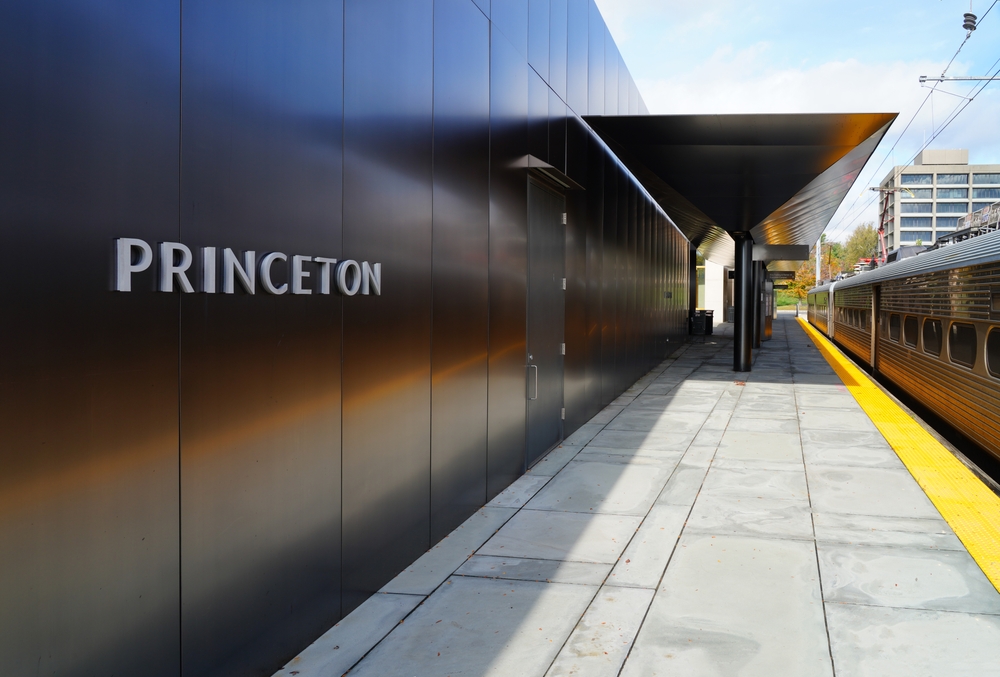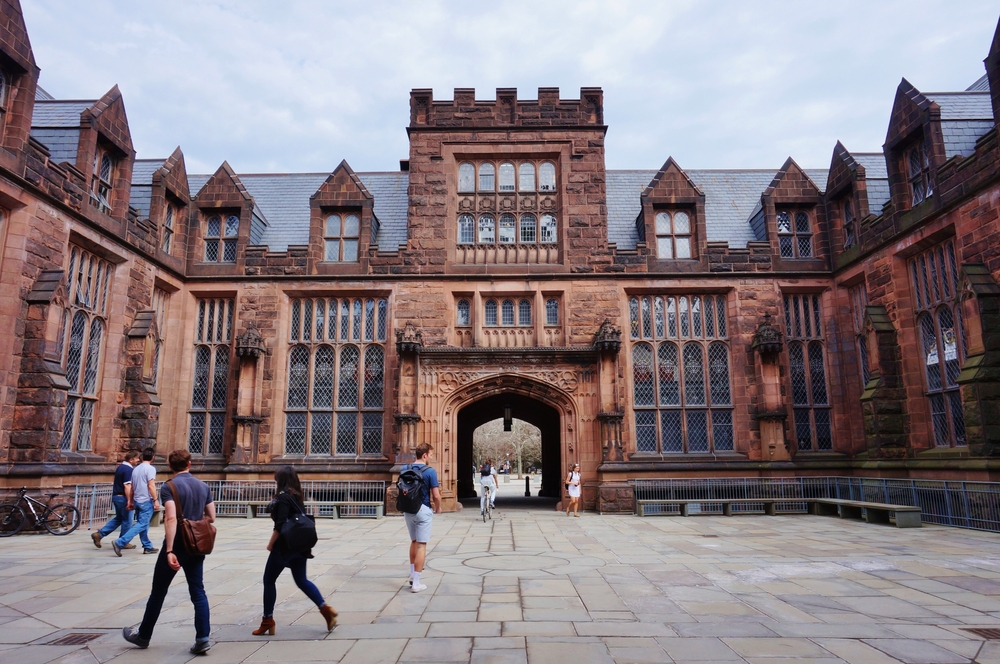Princeton Eliminates Tuition For Students From Families Earning Less Than $250,000 A Year

The cost of a dream can be crushing. For too many students, the idea of attending a top-tier university feels like standing at the foot of a mountain with no rope, no map, and no way up. The price tag alone can silence ambition before it has a chance to speak. But every so often, a door that seemed permanently locked swings open—and what’s on the other side can change not just one life, but generations to come.
Princeton University is making that kind of change right now. With its latest expansion in financial aid, the school isn’t just handing out scholarships; it’s rewriting the story of who gets to belong within its historic gates. It’s sending a message loud enough to echo beyond its ivy-covered walls: access and opportunity are not luxuries—they are the foundation of excellence.
This is not just a Princeton story. It’s a story about what happens when institutions decide that potential, not paycheck, determines who gets a seat at the table. And it’s a reminder to all of us that removing barriers to education isn’t just an act of generosity—it’s an investment in the kind of future we all share.

Princeton’s Bold Expansion in Financial Aid
In an era when the rising cost of higher education often feels like an unscalable wall, Princeton University is dismantling barriers brick by brick. With its latest round of enhancements, the school now ensures that most families earning up to $150,000 annually will pay nothing for their student’s total cost of attendance—covering not just tuition, but housing, meals, books, and even personal expenses. For families earning up to $250,000, tuition itself will be entirely covered, while those earning beyond $350,000 may still qualify for grant aid, especially if they have multiple children in college.
This expansion is more than numbers on a financial aid chart—it’s a tangible shift in who gets to dream about attending one of the world’s most prestigious universities. In the incoming Class of 2029, roughly 25% of students are eligible for Pell Grants, marking the highest percentage in Princeton’s history and a significant jump from the previous year’s 21.7%. Two-thirds of undergraduates are expected to receive some form of aid this year, with the average package exceeding $80,000.
Princeton’s commitment isn’t new. Since 2001, it has been a pioneer in eliminating loans from aid packages, replacing them with grants that do not need repayment. This has allowed students to graduate free from the burden of debt—turning the focus from “How will I pay for this?” to “What will I make of this opportunity?” As Provost Jennifer Rexford put it, the goal is simple but transformative: to make the Princeton experience “more affordable for more students than ever.”

The Changing Face of Princeton’s Student Body
The Class of 2029 is more than just a group of high achievers—it’s a living testament to Princeton’s evolving commitment to diversity in backgrounds, experiences, and perspectives. Students hail from 47 U.S. states and Washington, D.C., as well as U.S. territories like Puerto Rico, Guam, the Northern Mariana Islands, and the U.S. Virgin Islands. Beyond national borders, the incoming class brings voices from 65 countries—from Bolivia to Kenya, from New Zealand to South Korea.
This year’s first-year cohort includes 16.7% first-generation college students, a milestone that signals progress in reaching students who may never have seen Princeton as an attainable option. At the same time, 12.4% are children of alumni, illustrating that the university continues to draw from multigenerational connections even as it widens its doors.
Academic interests are similarly diverse. About two-thirds (65.7%) expressed interest in pursuing a Bachelor of Arts degree, 27.3% leaned toward the Bachelor of Science in Engineering, while the rest are still exploring their options—proof that curiosity is alive and well before classes even begin.
Ethnic representation shows both stability and shifts. Asian American students make up 27.1% of the U.S. citizen and permanent resident population in the class, up from 23.8% the previous year. Hispanic or Latino students hold steady at 9.2%, and multiracial students at 7.7%. However, the percentage of Black or African American students decreased to 5%, from 8.9% last year—a change occurring alongside a rise in the number of students choosing not to disclose their race, now at 8.2%, reflecting a national trend since the Supreme Court’s 2023 decision limiting race consideration in admissions.
This demographic tapestry doesn’t just decorate Princeton’s campus—it deepens the conversations in classrooms, dorms, and dining halls. It means future leaders are not learning in echo chambers, but in a place where stories, cultures, and perspectives collide in the best way possible.

Transfer Students and Nontraditional Pathways
Princeton’s Class of 2029 isn’t solely made up of students coming straight from high school. This year, 32 transfer students are joining the undergraduate community—bringing with them a wealth of life experience and diverse educational journeys. Among them are 22 U.S. military veterans, representing service in the Air Force, Army, Marines, and Navy. Their presence on campus is a reminder that leadership, discipline, and resilience can be forged in very different arenas before being applied to academic pursuits.
Community college pathways are also a significant part of this incoming group. Students have transferred from institutions such as Essex County College, Ocean County College, and Rowan College at Burlington County in New Jersey; Hudson Valley Community College in New York; and Coastline College in California. These schools represent stepping stones that, with Princeton’s support, now lead directly to the Ivy League.
By opening doors to nontraditional students—those who may have paused their education, served their country, or pursued higher education through more accessible local institutions—Princeton is signaling that talent and ambition are not confined to a single, linear academic path. These students add dimension to the campus community, challenging the notion that there’s only one “right” way to arrive at a top-tier university.
The Enduring Impact of Princeton’s Financial Aid Model
Princeton’s approach to financial aid is not a passing experiment or a public-relations flourish—it is the product of more than two decades of deliberate choices and sustained investment. In 2001, the university took a groundbreaking step that reshaped the national conversation about access to elite education: it became the first U.S. institution to completely eliminate loans from its financial aid packages. From that moment forward, every student’s demonstrated need would be met entirely through grants, not loans, freeing them from the burden of repayment after graduation. This bold move not only set a new benchmark for affordability but also challenged other universities to reconsider their own models.
The strength of this commitment rests on a powerful foundation: the university’s endowment and the deep loyalty of its alumni community. Nearly 70% of Princeton’s undergraduate financial aid budget comes from endowment payouts dedicated specifically to student support, a remarkable testament to the foresight of university leadership and the sustained generosity of donors. Alumni giving has become a lifeline for these programs, allowing the institution to expand its aid year after year without compromising quality. These resources have turned Princeton’s promise of access into a reality for thousands of students from a wide spectrum of economic backgrounds.
But the impact of Princeton’s financial aid model reaches far beyond the campus gates. By removing cost as a barrier, the university gives its students an extraordinary gift: the freedom to choose their academic paths and future careers based on passion, curiosity, and purpose rather than on the necessity of servicing student debt. A graduate who once might have felt locked into high-salary jobs solely to repay loans can now consider careers in research, public service, education, or the arts—fields that may not be as financially lucrative but are often deeply impactful. Over time, these choices ripple outward, shaping not only the lives of individual alumni but also the communities, industries, and institutions they go on to influence.
Perhaps the most significant takeaway from Princeton’s sustained efforts is the challenge it poses to the rest of higher education. It proves that access and excellence are not mutually exclusive, and that expanding opportunity does not mean lowering standards. When financial aid is viewed not as an optional program but as a core investment—on par with building world-class libraries or hiring renowned faculty—the return is immeasurable. It is measured not just in graduation rates or endowment growth, but in the human potential unlocked when the dream of a Princeton education is no longer limited by the size of a family’s bank account.
Call to Action – Rethinking What’s Possible
Princeton’s expanded financial aid program is more than a headline—it’s a mirror, reflecting what is possible when an institution decides that access is not a privilege for the few, but a right for all who are capable and driven. For the Class of 2029, the removal of financial barriers is not just a policy shift; it’s a life shift. It means that a student from a rural town in New Jersey, a veteran returning from service overseas, or a first-generation student from halfway across the world can step onto the same campus, sit in the same lecture halls, and dream on the same scale as anyone else.
But the real challenge—and the real opportunity—goes beyond Princeton. It’s for every university, every policymaker, and every community to ask: What are we willing to do to remove the invisible walls that keep talent out? The idea that excellence and inclusivity can coexist is not a theory; it is a fact being proven in real time. Other institutions have the blueprint before them: sustained investment, bold policy decisions, and an unwavering belief that potential should never be dictated by income.
For the rest of us—parents, students, alumni, and citizens—this is a call to rethink our own roles in creating access. We may not control billion-dollar endowments, but we do control the stories we amplify, the programs we support, and the leaders we hold accountable. Whether it’s advocating for equitable funding in public schools, mentoring students from underrepresented backgrounds, or challenging outdated assumptions about who “belongs” in elite spaces, change often starts at the personal level.
Princeton’s example invites us to believe in a version of the future where education is not a gate that keeps people out, but a bridge that brings them in. And if that future feels far off, remember: every bridge begins with a single stone. The question is, will we lay ours?
Loading...

